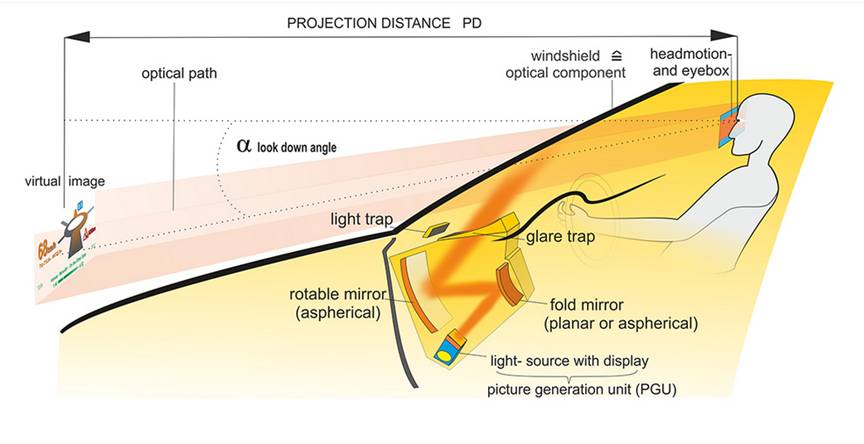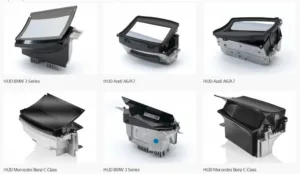The head up display (HUD) is making a big impact in new car models as one of the selling features that is pushed as a safety feature. Over the last few years, models including HUDs have mostly been higher end luxury cars, a fact that is changing more and more. Mid-size and even compact cars are now offering such options.
ABI Research has now released a forecast analyzing the HUD market and predicting continued strong growth through 2024. According to its forecast, one third of all cars shipping in 2024 will feature some form of HUD. While current global car sales are just short of 75 million units, we can expect this number to be significantly higher than that. Even with another economic downturn before then, the global car market may approach 100 million units. This equates to a CAGR of 27.3% annually.
The company also sees the combiner technology leading the market, based on lower manufacturing cost and the smaller size potential. With the trend to include the HUD into smaller and lower priced models, this seems to be a fair assessment.
The report mentions Bosch, Continental, Denso, Nippon-Seiki and Panasonic as the main suppliers for HUD units today. The German companies took an early lead with BMW and Audi being the first cars to introduce the HUD to the luxury car market. More specifically they are leading the market in the windshield HUD, where the windshield is part of the optical system.
Source: Continental
The first image shows several reference designs from Continental that underline the luxury market approach of the first HUD introduction.
 Source: Continental
Source: Continental
Continental also works on a combiner HUD that adds a combiner shield and eliminates the windshield as an optical component. Using the windshield as a reflector requires a coating or laminate on the inner surface to reduce double images. In addition, the unit can be produced independent of the windshield shape, resulting in larger production numbers. All this may contribute to the lower unit price.
Continental is looking forward to introducing an augmented reality HUD that will add full color capability and more adaptive response to the driver. One of the key differences between the augmented reality HUD and the other HUD models is the use of a DMD imager in the augmented reality version. The other models are using a 1.5″ TFT imager in the picture generation unit (PGU). According to Continental this technology should be ready for sale in 2016. This may indicate a shift in the HUD technology from TFT LCD to reflective DMD technology, at least in the higher end models. – NH

